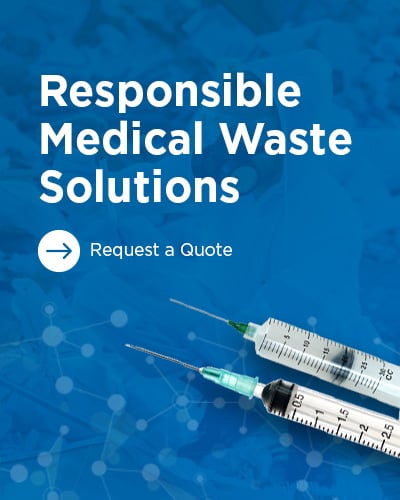In our ever-evolving world, there are various types of manufacturing, laboratories, and other industries that are advancing with modifications and testing every day. These contents are constantly being used in environmental settings and consequently accumulate into what is known as hazardous waste. What is considered hazardous waste? How do you dispose of hazardous waste? Today I’ll talk about how hazardous waste disposal works, the characteristics of hazardous waste, where hazardous waste is disposed of, and more. In the sections covered below, you can find all of this information and hazardous waste disposal near you!
Hazardous Waste Disposal Near Me
First, to know how hazardous waste disposal works, you need to know what is classified as hazardous waste. The Environmental Protection Agency (EPA) describes hazardous waste as “waste with properties that make it dangerous or capable of having a harmful effect on human health or the environment”. Hazardous waste comes in a variety of forms, including liquids, solids, gasses, and sludges. Other names for hazardous waste are atomic waste, toxic waste, nuclear waste, and more. You might be thinking, what are the specific characteristics of hazardous waste? Recognizable forms of hazardous waste include four different characteristics: ignitability, corrosivity, reactivity, and toxicity.
Find hazardous waste disposal near me
Ignitability examples: Hazardous wastes that are considered ignitable (can catch or start a fire) should be properly labeled with the ignitable symbol which is commonly known as a flame. Some examples of these wastes include certain liquids with flashpoints (the temperature at which the substance will ignite) below 140 °F, solids/sludges that cause a fire (under certain conditions), ignitable compressed gasses, and oxidizers.
The code for ignitable hazardous wastes is D001.
Corrosivity examples: Hazardous wastes with the potential of corrosivity should be labeled accordingly with the assigned corrosivity symbol. A few typical examples of this waste are aqueous wastes with a pH (potential/power hydrogen) of <2 or equal to 2, a pH > than or equal to 12.5 or based on the liquid's ability to corrode steel.
The code for corrosive hazardous wastes is D002.
Reactivity examples: The symbol for this characteristic usually includes chemicals, fire, or explosives. Hazardous wastes with reactivity characteristics are known to sometimes be unstable under normal conditions, possibly react with water, give off toxic gasses, and may be capable of explosion depending on the conditions.
Code for reactive hazardous wastes is D003.
Toxicity examples: The most common symbol for toxicity is a skull with crossbones to depict the severity of damage the waste can cause. This type of hazardous waste is extremely harmful when ingested or absorbed.
“Waste codes D004 through D043 that correspond to a contaminant and its associated TCLP concentration” stated by the EPA.
How Hazardous Waste Is Disposed
At this point, you’ve learned what hazardous waste is, the forms it comes in, and its four main characteristics. In this section, we’ll cover how hazardous waste is disposed of and the containment process. Hazardous waste can be set in certain hazardous waste containers that have the ability to safely store the materials for storage, transport, or treatment.
The Resource Conservation and Recovery Act (RCRA) describes that hazardous waste generators are essential in the management of this type of waste. According to the EPA “Generators must ensure and fully document that the hazardous waste that they produce is properly identified, managed, and treated prior to recycling or disposal”. The amount and intensity of this regulation depend on the amount of hazardous waste that the generator is producing. Once generators have produced hazardous waste, it is in the hands of transporters to move the waste to a facility that handles the waste. This can be through recycling, treating, storing or disposing of hazardous waste.
Hazardous Waste Disposal
Now, what happens to hazardous waste once it starts being disposed of? Below, you will find a list of disposals, their benefits, and their downfalls. A lot of hazardous wastes can be recycled, while others must be disposed of in landfills or incinerators.
Landfill: Hazardous waste doesn’t go into your everyday landfill whereas regular municipal waste is discarded. There are specific EPA-designated landfills for hazardous waste. A benefit of having landfills under the Resource Conservation Recovery Act (RCRA) is that these landfills ensure appropriate treatment for hazardous waste. These landfills accept only solid waste material. A disadvantage to landfills for hazardous waste includes that there is the possibility of a leak which would lead to a surge of hazardous chemicals contaminating the environment. Hazardous waste landfills also let harmful gasses into the air, however, new technology has made the advancement in capturing these harmful pollutants from the air and converting them into energy.
Recycling: A hazardous waste is recycled if it is “used or reused (e.g., as an ingredient in a process), reclaimed, or used in certain ways including used in a manner constituting disposal and burned for energy recovery”, says the EPA. The benefits of recycling hazardous waste include but are not limited to reducing environmental hazards, protecting natural resources, and lowering our reliance on raw materials/energy. Improper storage of hazardous waste materials might cause spills, leaks, fires, and contamination of soil and drinking water.
Hazardous Waste Disposal Companies
PureWay is one of the leading waste management and hazardous waste management companies in the US. With over 200,000 sites served nationwide PureWay is can help you remove and properly dispose of your RCRA Haz Waste from your facility. To learn more about PureWays services visit HAZARDOUS WASTE DISPOSAL NEAR ME







